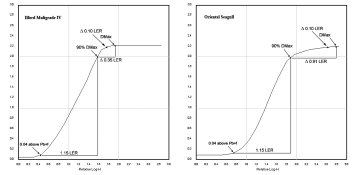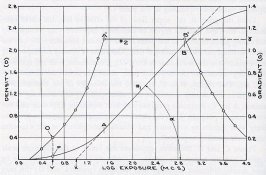Stephen Benskin
Member
Let's not forget the Tone Reproduction Curve, which compares the original subject with the print. For me this is an important and is frequently overlooked part of the process. It's basically the objective results of the photographic process. Wonder how a certain film and paper combination works together, want to compare one film to another, or the effects of exposure and development adjustments? Most of the questions can be answered with the reproduction curve. It requires a little study to properly read the curve, but it's worth it. I wrote my four quadrant reproduction program partly for the reproduction curve to help evaluate the photographic process.
Adding to what Ron has written, the eye doesn't see tones/luminances linearly. It tends to compress the shadows. That's why the Munsel Scale has its tone at perceptually uniform spacing (also a possible topic on print Zones). Short toed films can only help to compensate for this phenomenon.
It's important to realize that the print has a limited range. Any change in one part of the curve changes another. Increase local contrast in the shadows and the highlights are reduced. Mid-tones are also effected usually by darkening somewhat. This is not a judgement on perceived quality one way or the other, just something to be aware of.
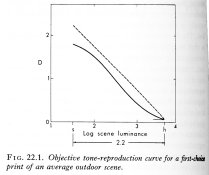
From The Theory of the Photographic Process, 3rd edition, "The gradient in the middletone region was always greater than 1.00 (usually 1.10-1.20) for the preferred prints of all the scenes studied. Whenever the middle tone gradient was less than 1.10, the prints were unanimously rejected as being "too flat." Whenever the density level of the prints was great enough so that the curves closely approached the 45-degree reference line, the prints were unanimously rejected because they appeared too dark." Preferred placement is around 1/3 stop below.
"This consistent failure of the preferred tone-reproduction curves to approximate the 45 degree reference line was thought to be due either to the limited maximum density (1.80) of the particular photographic papers used, or to the inability of the eye to compensate for the low illuminance on the prints, which was only about one-hundredth of the illuminance on the original sunlit scenes."
Adding to what Ron has written, the eye doesn't see tones/luminances linearly. It tends to compress the shadows. That's why the Munsel Scale has its tone at perceptually uniform spacing (also a possible topic on print Zones). Short toed films can only help to compensate for this phenomenon.
It's important to realize that the print has a limited range. Any change in one part of the curve changes another. Increase local contrast in the shadows and the highlights are reduced. Mid-tones are also effected usually by darkening somewhat. This is not a judgement on perceived quality one way or the other, just something to be aware of.

From The Theory of the Photographic Process, 3rd edition, "The gradient in the middletone region was always greater than 1.00 (usually 1.10-1.20) for the preferred prints of all the scenes studied. Whenever the middle tone gradient was less than 1.10, the prints were unanimously rejected as being "too flat." Whenever the density level of the prints was great enough so that the curves closely approached the 45-degree reference line, the prints were unanimously rejected because they appeared too dark." Preferred placement is around 1/3 stop below.
"This consistent failure of the preferred tone-reproduction curves to approximate the 45 degree reference line was thought to be due either to the limited maximum density (1.80) of the particular photographic papers used, or to the inability of the eye to compensate for the low illuminance on the prints, which was only about one-hundredth of the illuminance on the original sunlit scenes."
Last edited by a moderator:








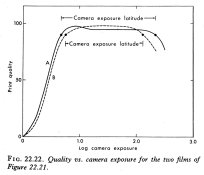
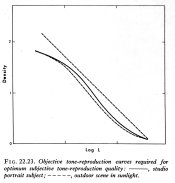
 Try doing all of this in color. B&W is simple! In fact, AFAIK, Mees and James never addressed this topic. Haist never planned to either. He was a B&W man to the core.
Try doing all of this in color. B&W is simple! In fact, AFAIK, Mees and James never addressed this topic. Haist never planned to either. He was a B&W man to the core.

